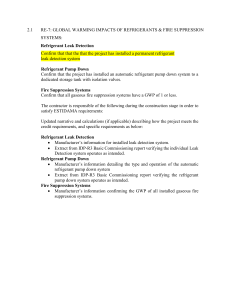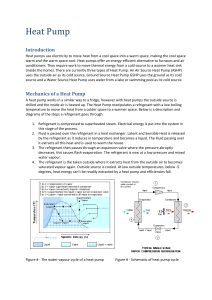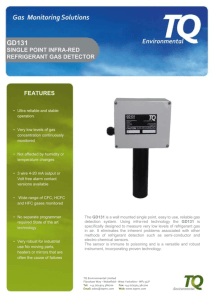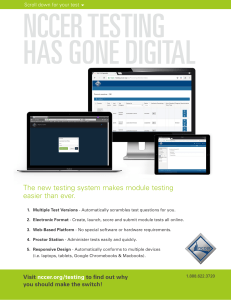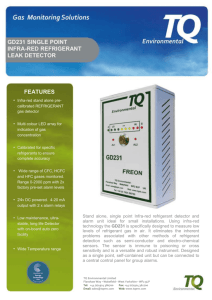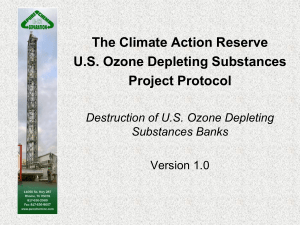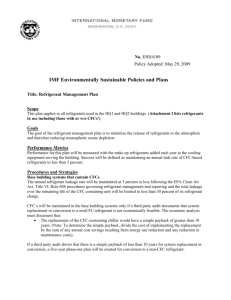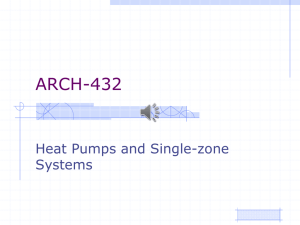Analysis of Thermal Cycles ME302
advertisement
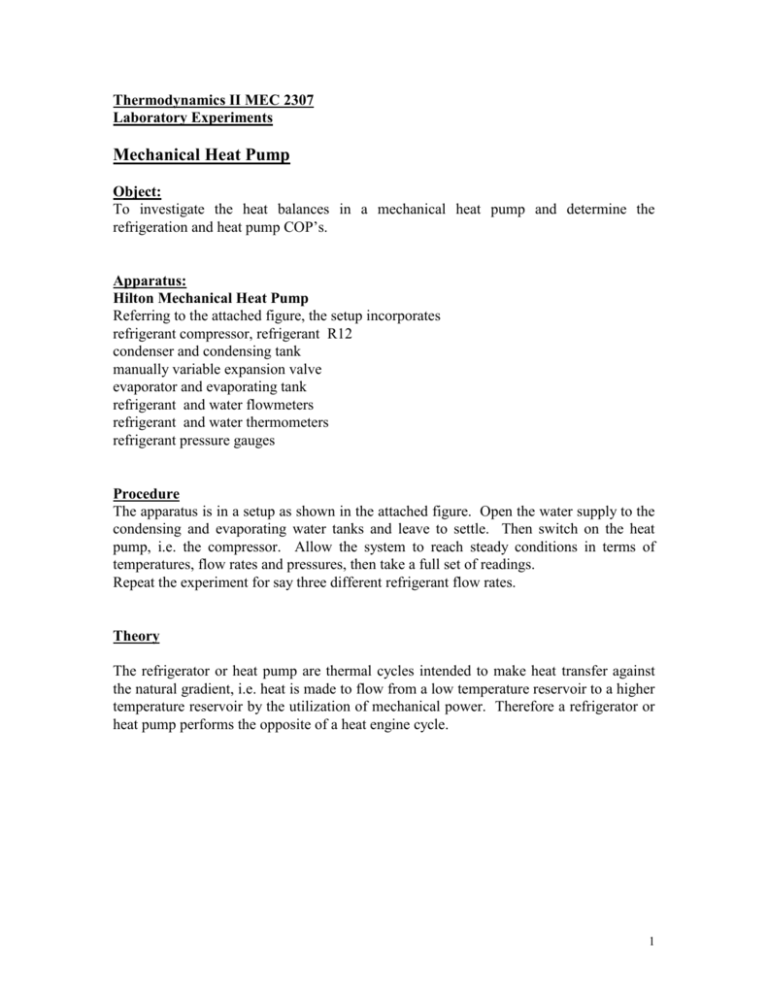
Thermodynamics II MEC 2307 Laboratory Experiments Mechanical Heat Pump Object: To investigate the heat balances in a mechanical heat pump and determine the refrigeration and heat pump COP’s. Apparatus: Hilton Mechanical Heat Pump Referring to the attached figure, the setup incorporates refrigerant compressor, refrigerant R12 condenser and condensing tank manually variable expansion valve evaporator and evaporating tank refrigerant and water flowmeters refrigerant and water thermometers refrigerant pressure gauges Procedure The apparatus is in a setup as shown in the attached figure. Open the water supply to the condensing and evaporating water tanks and leave to settle. Then switch on the heat pump, i.e. the compressor. Allow the system to reach steady conditions in terms of temperatures, flow rates and pressures, then take a full set of readings. Repeat the experiment for say three different refrigerant flow rates. Theory The refrigerator or heat pump are thermal cycles intended to make heat transfer against the natural gradient, i.e. heat is made to flow from a low temperature reservoir to a higher temperature reservoir by the utilization of mechanical power. Therefore a refrigerator or heat pump performs the opposite of a heat engine cycle. 1 T2 Q2 Reversed heat engine W By the 1st law, W + Q1 = Q2 Coefficient of Performance, COP, is given by Q COPrefrigerator 1 W COPheatpump Q1 T1 Q2 W and COPheatpump COPrefrigerator 1 For the electrical kWhr power meter used, 1kWhr 3600kJ . kJ 1kWhr 166 2 3 revolutions , hence 1rev 216 In the test rig, the Work input measured is the electrical input and not the true work on the refrigerant. Therefore the measured Work is larger than the work going into the cycle because of the motor and mechanical inefficiencies. Results Plot the cycle on the p-h diagram for the test with the highest refrigerant flow rate. Using the p-h diagram evaluate the enthalpy before and after the condenser and evaporator. Hence calculate the quantities Q2 and Q1 and W from the determined enthalpies. Do the same calculation based on the enthalpy determined from the ph diagram for the other flow rates. Perform a check on Q1 and Q2 determined from the refrigerant by also calculating them from the water. Calculate the COP’s for refrigerator and heat pump based on Q2 Q1 and W prom the ph diagram/ estimate the true work input into the cycle, and the overall motor&mech efficiency Conclusions Draw your own conclusions on the experiment and results obtained. 2 Readings 0 Ambient temperature: Atmospheric pressure: C (only for reference) cmHg (only for reference) Refrigerant Flow g/s Pressures kN/m2 Cond Evap Water Temperatures Inlet Cond Out Cond Inlet Evap o C Flow Out Evap Cond kg/hr Evap kg/hr Electrical Power Temperatures oC Comm on In Cond Out Evap Out Power Time kWh No. of t s revs 3
